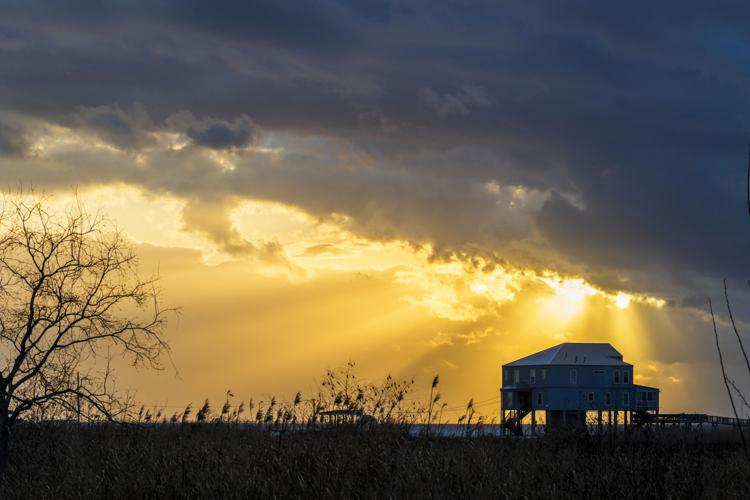Chances are you've heard this one before. A Curious Louisiana reader is wondering whether Baton Rouge's often stunning sunsets have a less than beautiful source: Namely, chemicals released into the air from local petrochemical plants.
Questions about human pollutants affecting sunsets are neither new nor limited to Louisiana. They often rate a mention when it comes to big cities, most notably that king of urban smog, Los Angeles.
One thing's for sure: Pollutants can, in fact, alter the color of the sky.
A bit of science: The sky's colors come from what's known as Rayleigh scattering, which entails sunlight interacting with molecules in the air and scattering them around. Colors with shorter wavelengths, especially and obviously blue, are scattered the most. On the other end of the spectrum are colors like reds and oranges.
Craig Bohren, professor emeritus of meteorology at Pennsylvania State University, told Scientific American in 2007 that bright red sunsets tend to be assisted by pollutants.
"In an atmosphere with no junk at anytime, you'll never get a sunset that would make someone with normal color vision say, 'Wow, that's red!'" he said. "It is certainly true that the 'pollution' results in redder sunsets."

The sun sets over a home located on a sliver of land between Lake St. Catherine and Lake Pontchartrain in eastern New Orleans on Thursday, February 23, 2024. (Photo by Chris Granger, The Times-Picayune)
Pollution, though, isn't strictly man-made. Skies that are deep red are full of aerosols, and while these can be (and often are) the result of human pollutants — here's looking at you, L.A. — they can also be caused by natural processes. Skies are often startlingly red and orange following natural eruptions or forest fires, for instance.
On that note, and proving that pretty sunsets aren't necessarily linked to human pollutants, according to the British Met Office the phrase "red sky at night, shepherd's delight" or "red sky at night, sailor's delight" is based in fact.
"A red sky at sunset means high pressure is moving in from the west, so therefore the next day will usually be dry and pleasant," it stated. Quirky old rhymes can be true, after all.
So, closer to home, what's the story with our sky?
Slawo Lomnicki, an associate professor at LSU's Department of Environmental Sciences, has heard the tale about our chemically-addled sunsets. He's not buying it.
"I heard this story going around too, but I don’t think it has anything to do with air pollution," he said. "This might be theoretically possible if you might have, say, a lot of particulates suspended in the air. Due to light diffraction it may cause some of the wavelengths to become a little more dominant than the others, but I think it's unlikely."
So, if it's not pollution, what is it? Lomnicki suggests looking toward Louisiana's sticky climate.
"If you think about it, in some of the hot summer months there is a lot of humidity in the air, almost like a haze," he said. "This can cause different colors to appear. For example, if it's more of an orange tint, (or) a deep red tint, this would be because of the humidity."
Who said humidity isn't pretty?



